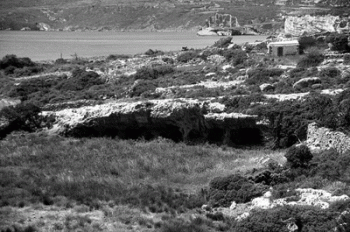American Journal of Archaeology | The Journal of the Archaeological Institute of America
You are here
The First “Minoans” of Kythera Revisited: Technology, Demography, and Landscape in the Prepalatial Aegean
April 2007 (111.2)
The First “Minoans” of Kythera Revisited: Technology, Demography, and Landscape in the Prepalatial Aegean
This article explores human mobility and cultural transmission among small-scale societies in prehistory through the analysis of technological, demographic, and landscape data from the Aegean island of Kythera during the Prepalatial period (mainly the Early Bronze Age of the third millennium B.C.E.). Since excavations at the coastal site of Kastri on Kythera were conducted in the 1960s, the island has played a major role in interpretations of Minoanization in the Aegean due to the intensity of Cretan influence on local culture and the precocious date at which this begins. These factors have prompted Kastri’s identification as a Cretan colony. This paper reexamines the dynamics of early Kythera, drawing on a reanalysis of material from Kastri (with a focus on potting traditions) coupled with new evidence from an intensive surface survey. The results uphold the case for population movement from Crete but embed this within a longer history of regional interaction. Equally, however, they demonstrate the substantial nature of preexisting communities, some of which probably continued alongside Cretan elements until the threshold of the second millennium B.C.E. Only at the start of the Palatial age in the Aegean did the former tradition vanish and Kythera become, in essence, a part of Crete. Explanations for early Cretan interest in Kythera should avoid the anachronism of applying Palatial-period models to the smaller-scale societies and distinct interaction networks of the Prepalatial Aegean. More generally, this article advocates the potential for archaeological investigation of migrational processes in and beyond the Aegean.
By Cyprian Broodbank and Evangelia Kiriatzi
American Journal of Archaeology Vol. 111, No. 2 (April 2007), pp. 241–274
DOI: 10.3764/aja.111.2.241
© 2007 Archaeological Institute of America


